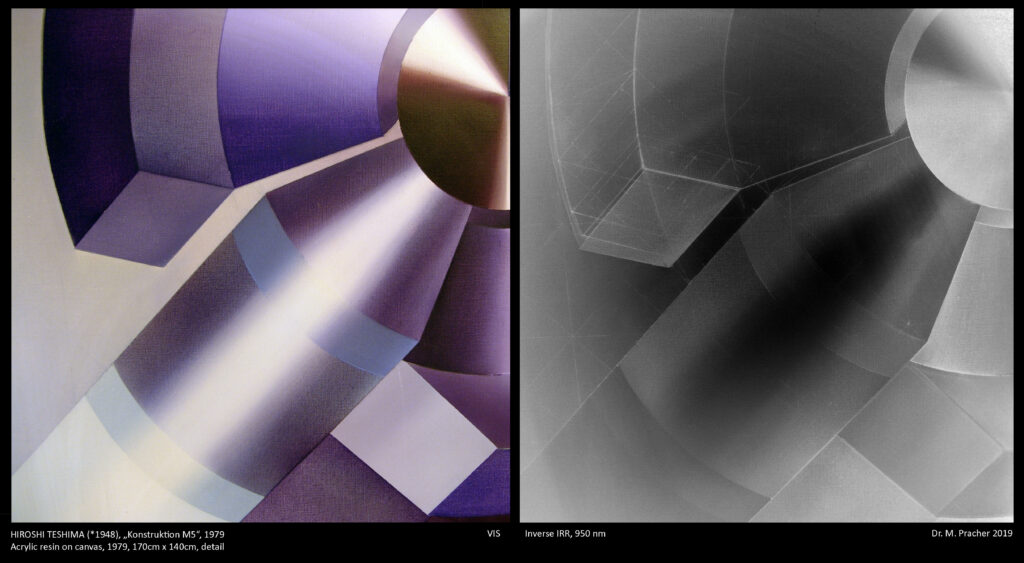MISSION STATEMENT ART EXPERT: RECOGNIZING VALUES – NAMING VALUES
What is a work of art worth and how does this value change after damage? Whether in insurance matters, inheritance or in court – art experts are always called upon when a neutral expert opinion is required.

Art expert BVK
publicly appointed and sworn expert witness
“The value of art and culture derives not least from its local and historical context, from its significance for place and people. Culture is not a numbers game.” This quote from a German cultural politician, taken out of context here, is in principle correct. Nevertheless, it is the task of the art expert to do exactly that: to translate works of art into figures in a comprehensible and, if possible, resilient manner.
VALUE IS NOT EQUAL TO VALUE
Depending on the valuation occasion, different values can be assigned to a work. In the case of estate valuation and donation, for example, the fair market value is determined. This value according to the valuation law is determined by the price that would be obtained in the ordinary course of business according to the nature of the asset in the event of a sale. For works of art and collections, it is also to be determined with caution and restraint due to the often difficult prospects of realization. It is therefore a selling price, equivalent to the market value, or, depending on the point of view, in the worst case, a dealer’s purchase price. In contrast to this are the insurance value and the replacement value. Both are based on the dealer purchase price. The replacement value is used in the insurance industry in the event of a total or partial loss. It describes the amount of money that must be spent in order to purchase a work of art of comparable type and quality from a specialist dealer without time pressure. The insured value is usually set even higher, since a potential increase in value is also taken into account. Since art objects are usually unique and worthy of collection, definitions such as new value or current value, which presupposes wear and tear due to use or age, cannot be applied.
VALUE-FORMING CRITERIA
But how can the value of a work of art be determined at a given point in time? The central tool for this is the consideration of the value-forming criteria of a work of art. Every work of art possesses characteristics that generate a certain resonance on the art market. They provide information about the importance of an artist or comparable artist and a work comparable in type and quality on the market. Value-creating criteria include: Authenticity, artist, school, signature and dating, genre, technique, dimensions, motif, innovation, condition, market freshness, art and cultural historical significance, quality, provenance, freedom from restitution, rarity, creative period, characteristics and performance.
AUTHENTICITY
The most important statement about the value of an object is the question of authenticity. Insights into the authenticity, the genuineness of a work, can be gained through style-critical observation, connoisseurship (Connaisseurschaft), material analysis, painting technique and material use (Technical Art History) as well as provenance, the unbroken origin. It should be noted here that it is much easier to recognize a forgery than to prove authenticity beyond doubt.
IS THE ARTWORK SIGNED?
The artist and his importance form another criterion of value just like the question of whether the piece is signed or merely considered “attributed”. The genre and technique of the work also plays a role. Drawings, for example, traditionally trade lower than watercolors, which in turn trade lower than comparable oil paintings, unless the artist is particularly well known for one of the aforementioned techniques. A painting in the oeuvre of a sculptor is an exception, which is therefore rare, but also atypical. Smaller works are usually cheaper than large ones, more market-friendly motifs find a wider collector interest. The Biedermeier portrait of a young beauty will sell better than that of an older lady of the same artistic quality.

THE STATE OF PRESERVATION
The state of preservation of a work of art is related to the rarity and importance of the artist. In the case of a rare, sought-after work, a collector will also accept a worse condition. A work in comparable condition by a weaker artist will have a harder time on the market. Provenance, as mentioned above, has a significant impact on value. Who was the previous owner, was the work part of an important collection, has it already been published and is therefore verifiable? In the best case, a work can be traced back to the artist’s studio. Provenance research also asks and questions whether there are uncertainties in ownership, for example, whether the work was stolen, looted, or illegally appropriated. Another important point of value-creating criteria is performance. What is examined is how the artist or a comparable artist has been traded in recent years and decades.
ART PRICE DATABASES
Various art price databases give estimated values, limit and hammer prices of comparable works, which show a tendency in the price. Here it is important to consider which prices are mentioned there and whether there were special features at the time of the sale that could have influenced the price. This could have been caused by a timely exhibition, media attention, a bidding war or a particularly high sale of a comparable work. It must also be clarified whether the auction dates are representative of the artist and his work or whether he is more strongly represented in the art or gallery trade. Taking into account the aforementioned value-forming criteria, and depending on the experience of the art expert and the amount of research required, the expected replacement, fair market and insurance values can be determined in a comprehensible and, to a certain extent, reliable manner.
UNKNOWN ARTISTS
In liability cases with total or partial damage, it often happens that works of artists have to be valued that have never been traded. Nevertheless, a loss has been incurred that must be quantified. In this case, comparable artists with a similar curriculum vitae, education and artistic approach who have already been traded must be found through market research. After adjustment according to value-forming criteria, the trade prices can be defined comprehensibly in these cases as well.
REDUCTION IN VALUE AFTER RESTORATION
The change in value of a work of art in the case of partial damage is somewhat more complex. Together with the injured party, the causer of the damage reports the damage and claims to the insurance company. In addition to information on how the damage occurred, the damage report also contains information on the value or purchase price of the object.

The emotionally affected injured party understandably often has only a vague or traditional idea of the value and extent of the damage. An external art expert can be called in by the insurance company as a neutral authority to check the plausibility of the damage, i.e. whether the damage to the work of art corresponds to the spatial conditions and the course described, and whether there is a total or partial loss and, above all, what the value of the damaged object was and is.
THE EXPERT AS ARBITRATOR
The art expert also has the role of an arbitrator who impartially assesses the facts of the case. After personally examining the damaged object and reviewing the circumstances, the first questions to be answered are how severe the damage is, whether restoration is possible, and how much less the work would be worth after restoration. If one considers only the acute damage, a restored work is always worth less than the undamaged work of art before the damage. The more an object is damaged and subsequently reworked, the less attractive it becomes on the market. It is therefore necessary to estimate how the art market would react to the change in the state of preservation. The prerequisite is that the damage and the restoration are known to prospective buyers.

Since each work of art is unique in type, history and condition, an individual significance of the damage for the work of art must also be defined in accordance with the connection between damage and market reaction. With the aim of transparency and traceability, the damage to the work of art is fragmented for this purpose and considered and evaluated under material and immaterial damage aspects. It is not enough to name the size of a damage, but also to consider other aspects such as the position in the composition, the obviousness, the state of preservation before the damage, the impairment of the assigned function or whether it is a first damage or a multiple damage, just to name a few.
By looking at the tangible and intangible aspects of damage, it becomes possible to make a statement about the importance of the damage in terms of quantity and quality. This individual importance is also called “relative damage in %”. If it is known how badly the object was damaged, the transfer to the market reaction, the depreciation, can be made. Here, the decisive factors are whether the damage achieved media attention, how successfully the restoration was implemented, and how rare or replaceable the work was. The intensive discussion of the individual significance of the damage and the explanation of the market reaction contributes to the acceptance of the results by the damaged party. The market reaction as a reduction in value is usually only named after the restoration has been completed. Between the examination of the work of art by the expert and the naming of the depreciation stands the practical restoration, which can last quite several months. However, the author is convinced that the reduction in value can also be named by the art expert before the restoration if the passage “reduction in value after restoration” is reinterpreted as “reduction in value after the best possible restoration”. This significantly shortens and accelerates the claims settlement process.
SUMMARY
Art appraisers are called in as neutral, independent and impartial experts on a wide variety of valuation occasions. They research and communicate complex issues in a transparent and comprehensible manner, which leads to increased acceptance of the results by all parties involved.
Dr. Martin Pracher, August 2018
THIS ARTICLE CAN ALSO BE FOUND IN ASSCOMPACT 08/2018 IN THE SPECIAL TOPIC “ART INSURANCE” ON PAGE 52 F.
